Alaska’s Good Friday earthquake in shocking images, 1964 – Rare Historical Photos

On March 27, 1964, at 5:36 PM, a megathrust earthquake occurred in the Prince William Sound region of Alaska. The epicenter was about 10 km east of the mouth of College Fiord, approximately 90 km west of Valdez and 120 km east of Anchorage.
Lasting four minutes and thirty-eight seconds, the magnitude 9.2 earthquake remains the most powerful earthquake recorded in North American history, and the second most powerful earthquake recorded in world history.
Eyewitnesses described hearing a crunching, grinding noise as the earth shook. They recalled seeing asphalt roads rise and fall like waves and the ground opening and closing before them, water shooting up through the ensuing cracks.
The violent shaking led to water, sewer and gas line breaks and widespread telephone and electrical failures. It effortlessly toppled telephone poles, buckled railroad tracks, split roads in half, uprooted buildings, cars and docks and tore homes apart. Seismic waves caused the earth to “ring like a bell.”
The initial quake and subsequent underwater landslides caused numerous tsunamis, which inflicted heavy damage on the coastal towns of Valdez, Whittier, Seward, and Kodiak. The town of Valdez was originally built on sand and gravel.

When the earthquake struck, seismic waves caused soil liquefaction and a portion of the delta slumped into Port Valdez, taking much of the port’s resources, living and otherwise, with it.
The delta slump triggered a local tsunami which destroyed almost anything left standing and ruptured the Union Oil Company’s oil tanks, igniting a massive fire.
Valdez was basically leveled, Anchorage sustained great destruction or damage to many inadequately earthquake-engineered houses, buildings, and infrastructure (paved streets, sidewalks, water and sewer mains, electrical systems, and other man-made equipment), particularly in the several landslide zones along Knik Arm.
As a result of the earthquake, 131 people are believed to have died: Nine died as a result of the earthquake itself, 122 died from the subsequent tsunami in places all around the world, five died from the tsunami in Oregon, and 13 died from the tsunami in California.
The quake was a reported XI on the modified Mercalli Intensity scale “indicating major structural damage, and ground fissures and failures”. Property damage was estimated at about $116 million ($0.73 billion in 2018 dollars). It is likely that the toll would have been much higher had the quake not occurred after 5 PM on Good Friday.
Geological surveys taken immediately afterward showed parts of the Alaskan coast sank up to eight feet (2.5m), other parts rose up to 38 feet (11.5m) and much of the coast moved 50 feet (15m) towards the ocean. Coastal forests plunged below sea level and were destroyed by salt water.
Prior to the 1964 Alaskan earthquake, scientists had limited knowledge of what happens far beneath the earth. Afterwards, geologists realized subduction zones—areas where two tectonic plates (huge slabs of rock made of the earth’s crust and upper mantle) meet and one bends under the other—played a major role in creating the immense Alaskan quake.
Scientists learned that at the point where the North American Plate overrode the Pacific Plate, it descended into a subduction zone. According to the United States Geological Survey, “The 1964 earthquake was giant because of the large area of the fault that slipped during the earthquake and the large amount of slip, or relative motion, between opposite sides of the earthquake fault.”






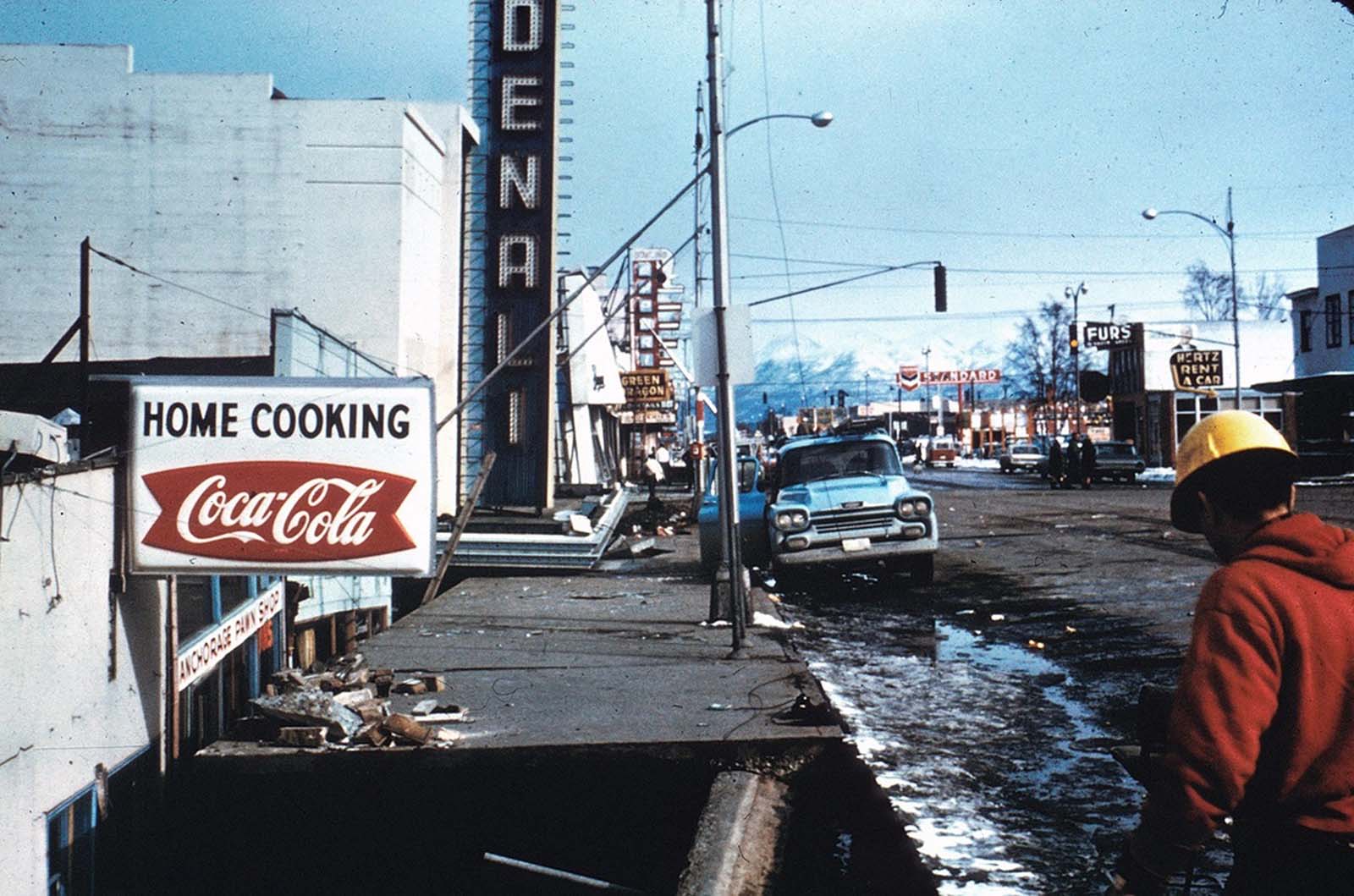
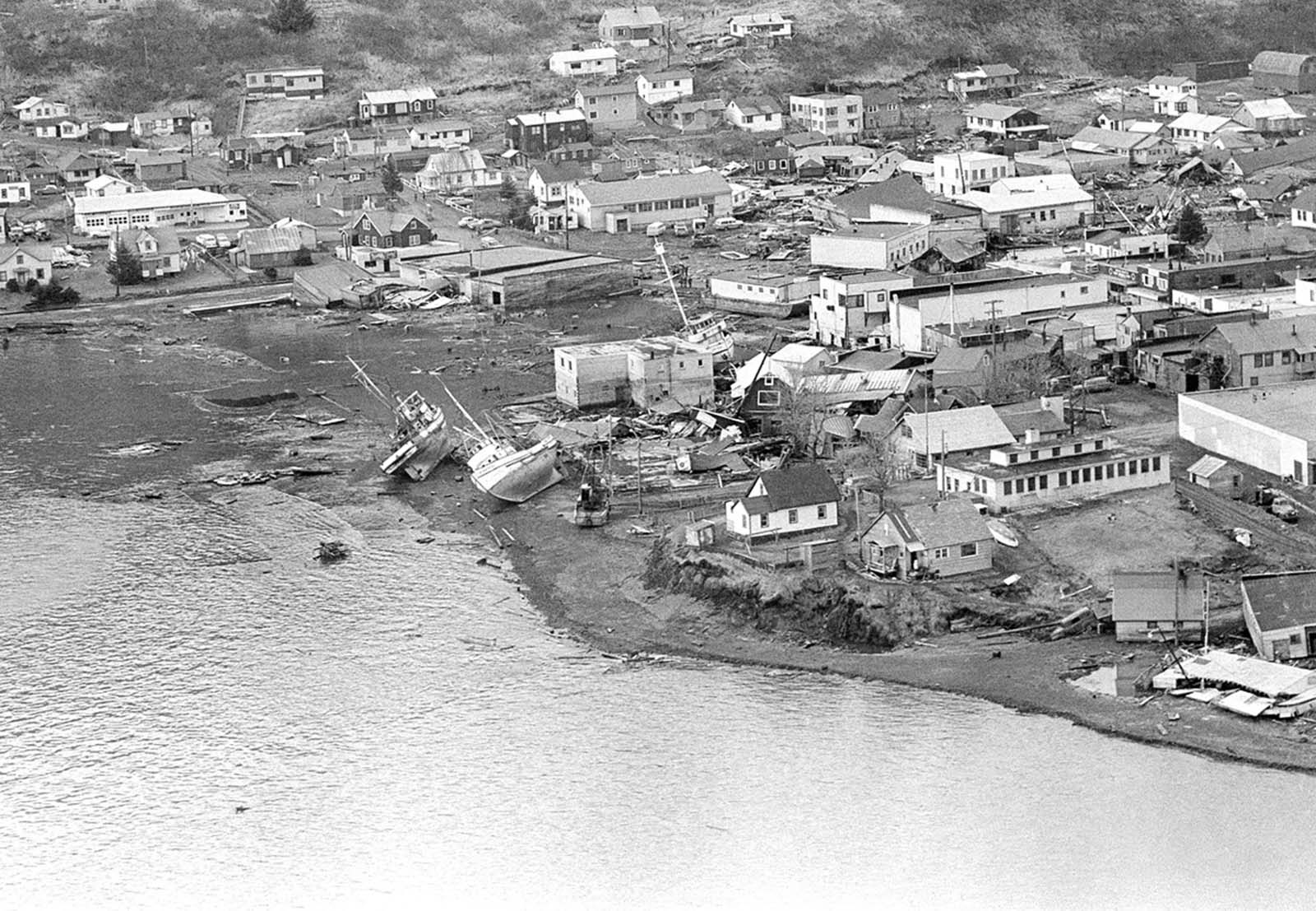



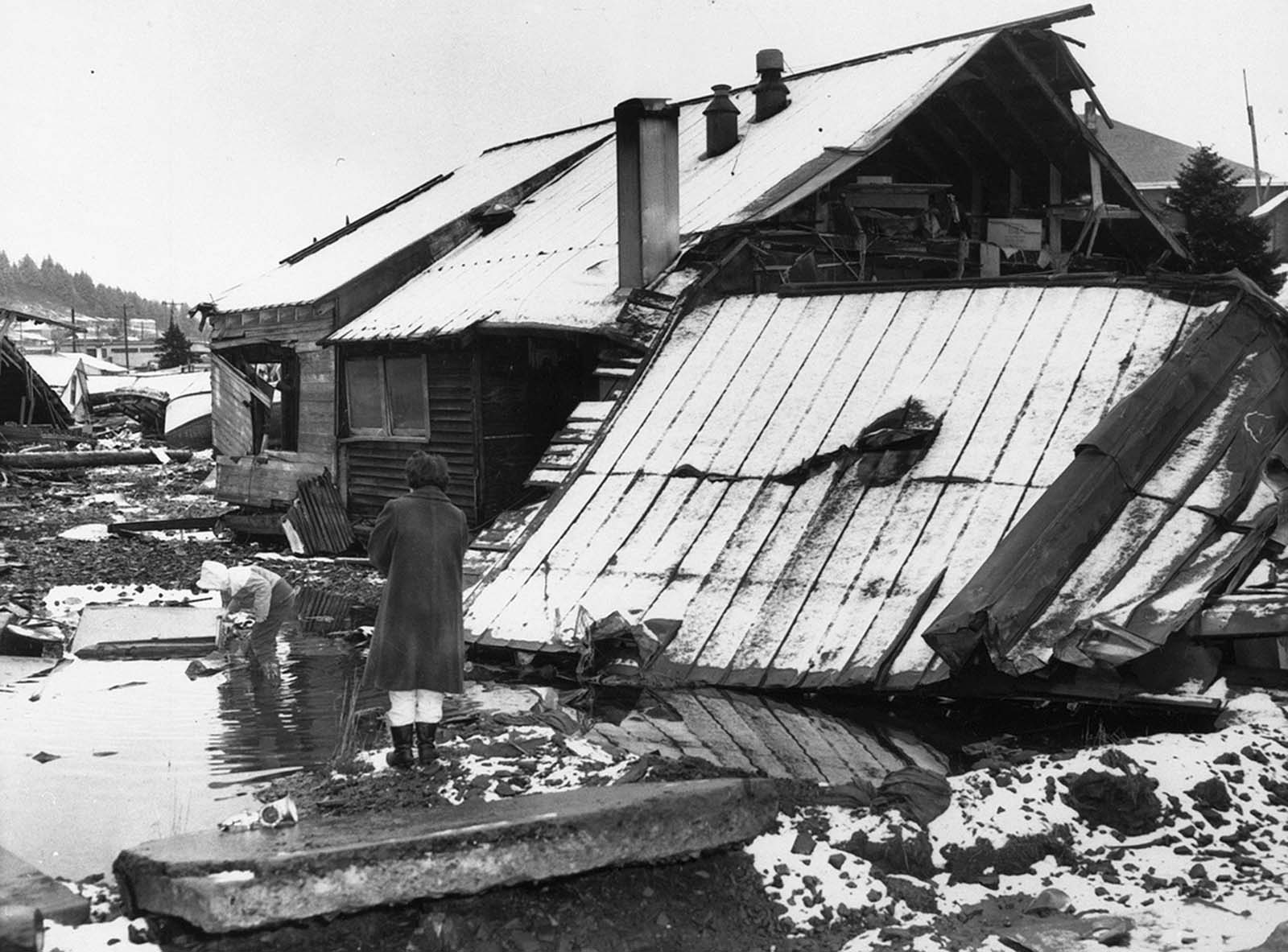






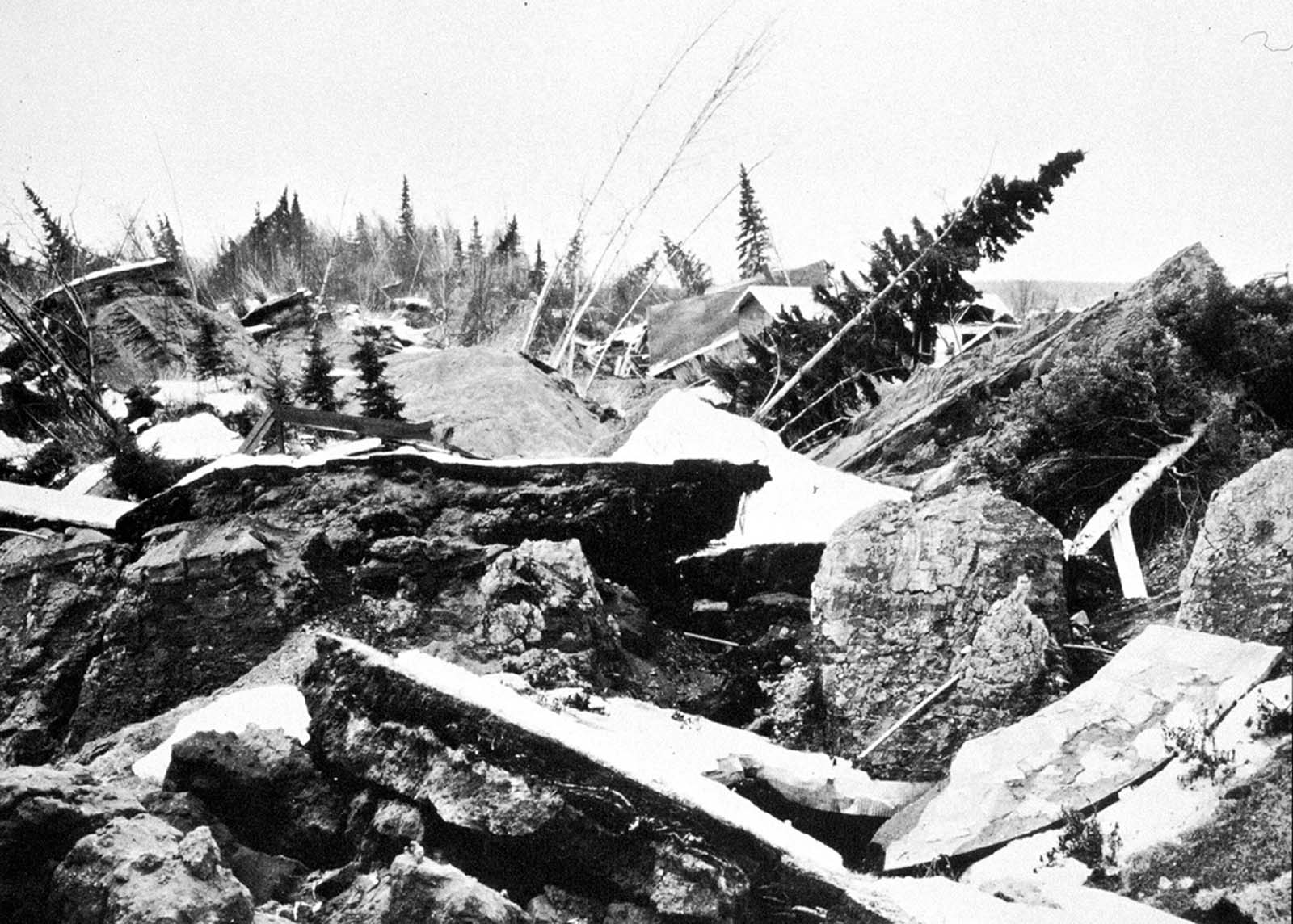





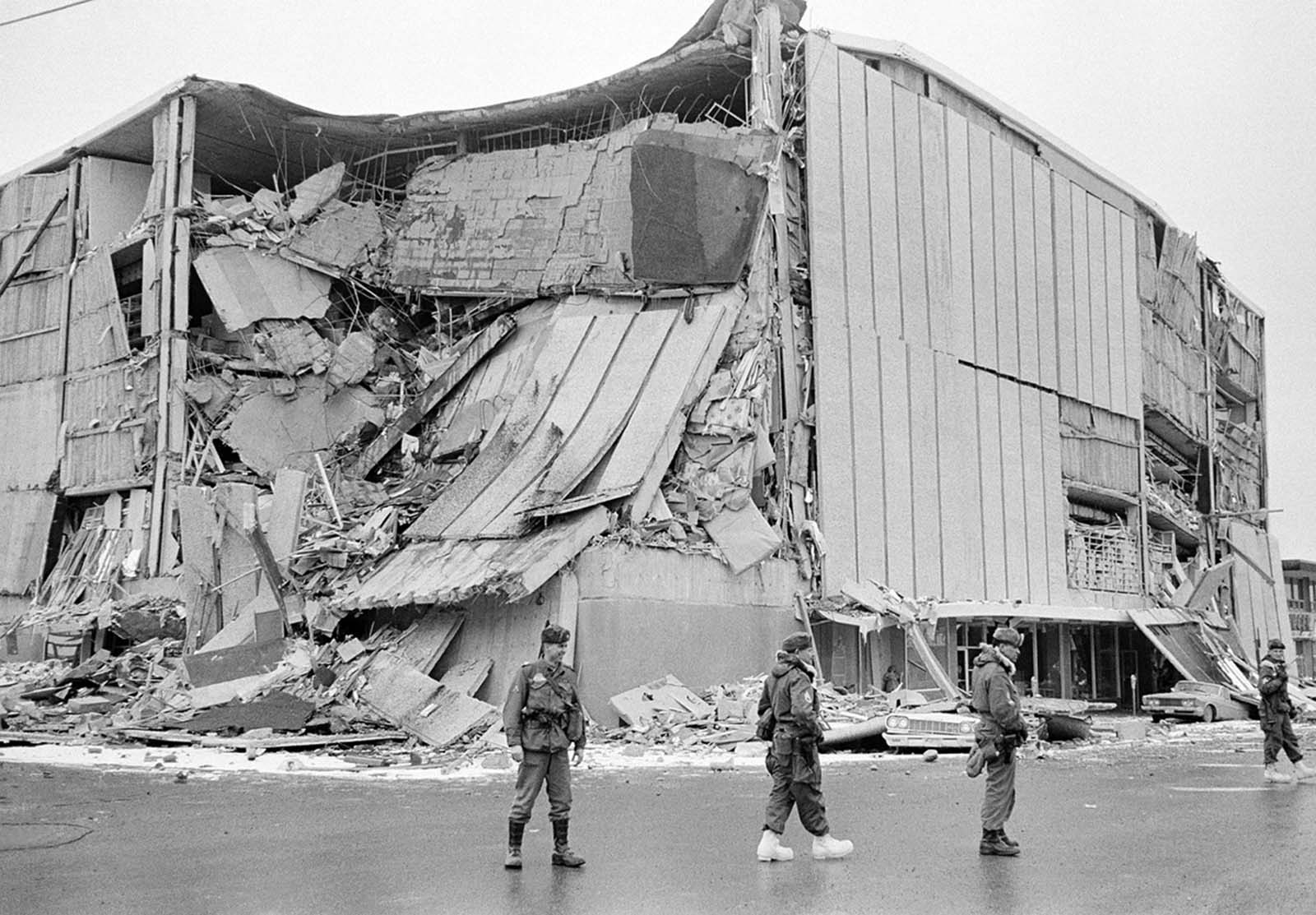





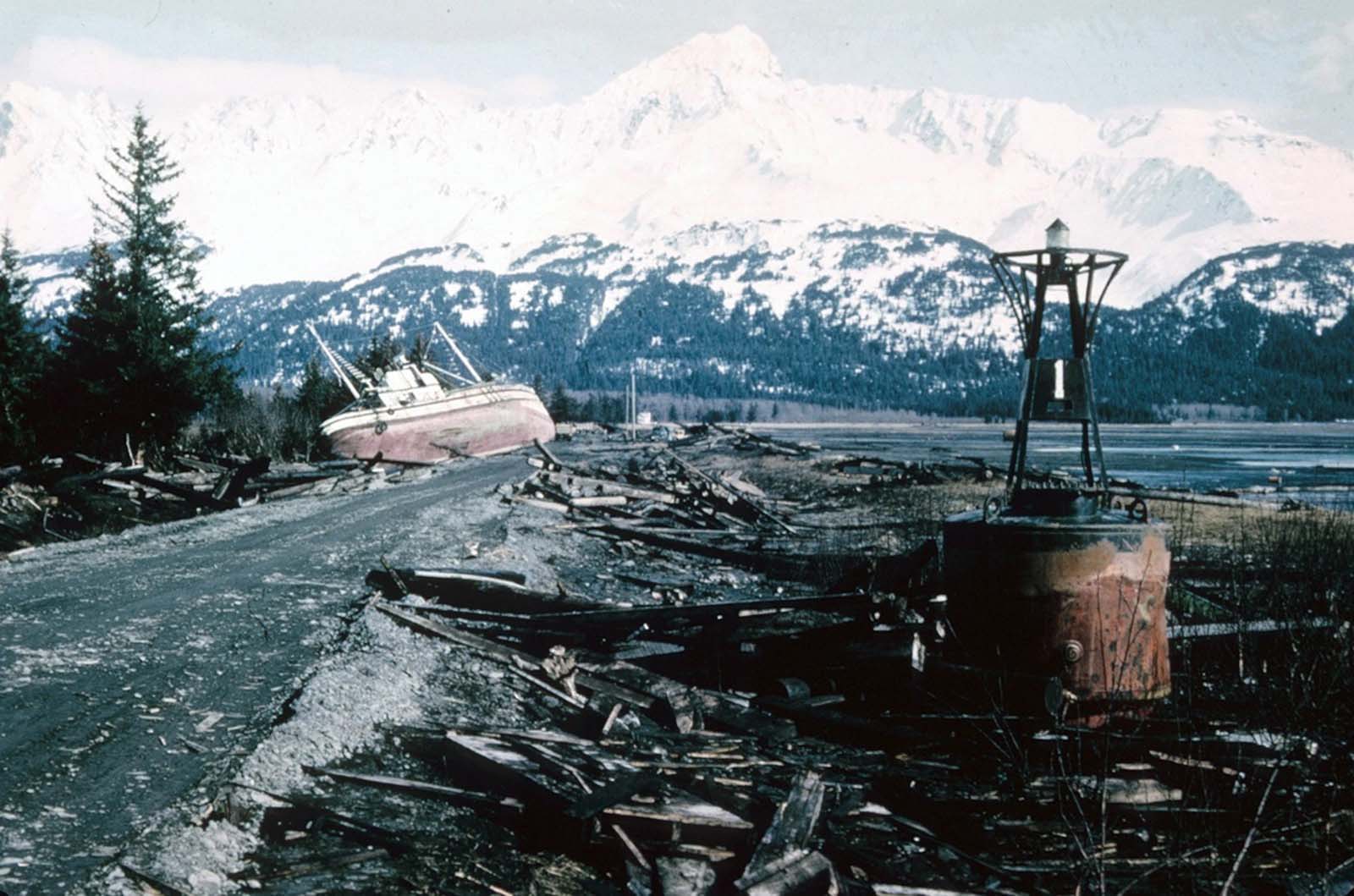



(Photo credit: U.S. Geological Survey).






